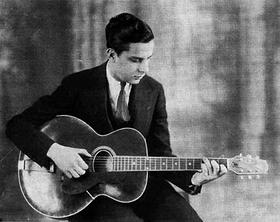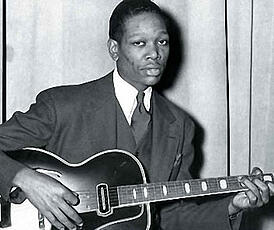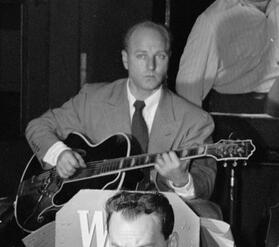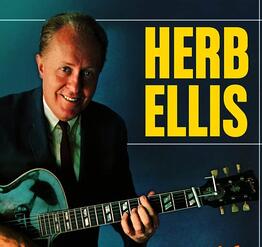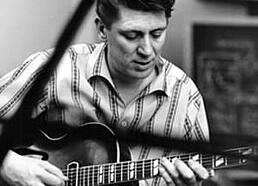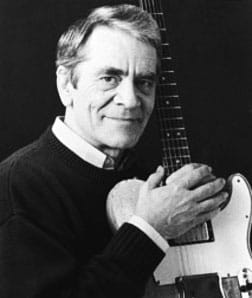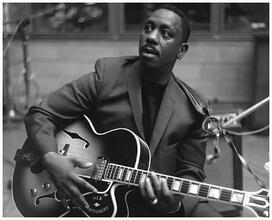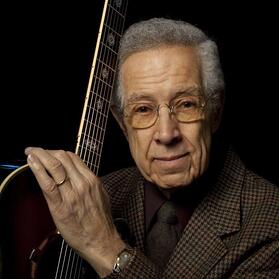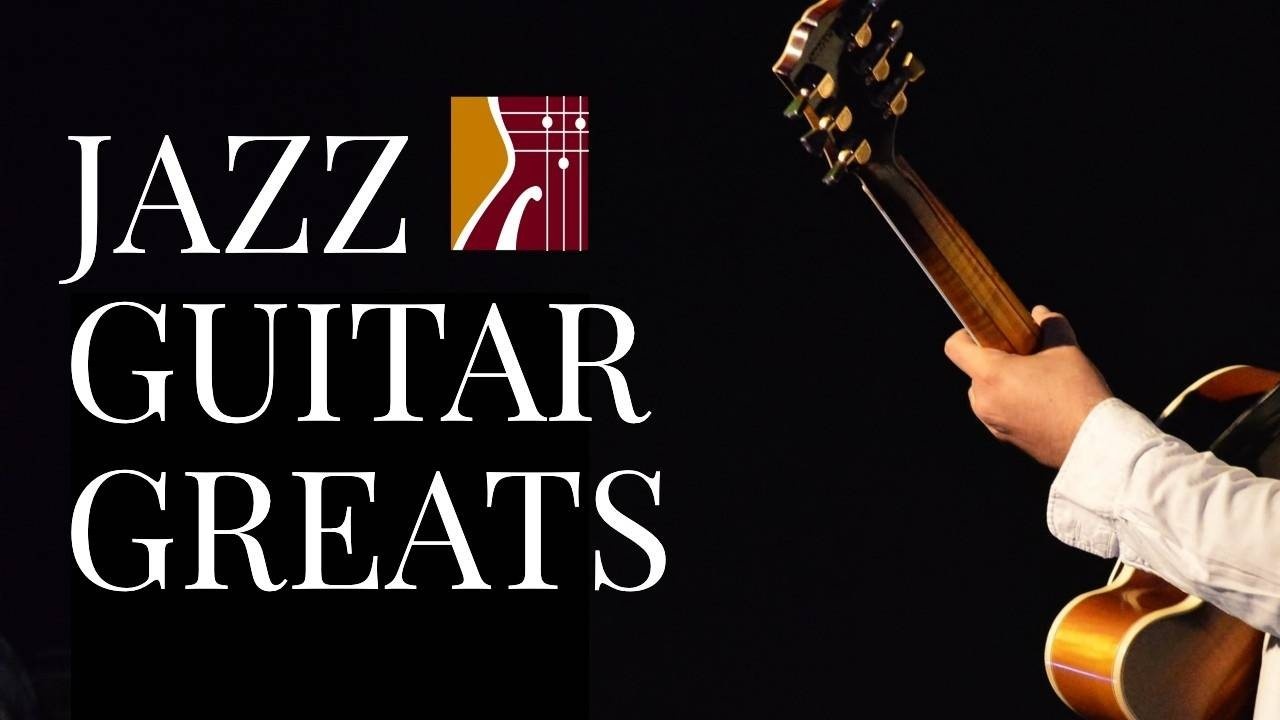
Favorite and Best Jazz Guitarists: Who Are The Greats of Jazz Guitar?
May 09, 2016A Guest Post by Ny Fanilo Andrianjafy
In chronological order:
The Most Influential and Favourite Jazz Guitarists of All Eras
Learning about the iconic and influential jazz guitarists is important if you want to become aware of the (still ongoing) evolution of the genre. Want to put yourself in the mood first? Start with this list of 5 Essential Jazz Guitar Albums here. Without further ado, the best of the best are all yours below.
Early Jazz Guitarists
Although Eddie Lang was likely not the first person to play guitar in a jazz context, he was one of the earliest to do so on record. His recordings with violinist Joe Venuti, Paul Whiteman, and Bing Crosby set the standard for the jazz guitarists in the 1920s and into the 30s.
A masterful rhythm player and a polished soloist, Lang was a major source of inspiration for gyspy jazz guitarist Django Reinhardt.

Freddie Green
In the late 1930's, guitar in jazz didn't have the same role it has today. During this era, big bands were the standard for jazz groups and guitars were an important piece of the rhythm section. Among these jazz guitarists, one that influenced the genre with his shell-voicings comping was Freddie Green (1911-1987) who was part of Count Basie's orchestra.
Nicknamed "Mr. Rhythm", his style and sense of timing inspired many players in their comping even to this day. Freddie Green's mastery of the rhythm was so perfect, it once made Count Basie say:
Freddie Green has been my right arm for thirty years. And if he leaves the band one day, I'll probably leave with him.
-Count Basie, from the book "Jazz At Ronnie Scott's" by Kitty Grime
Favorite Jazz Guitarists that Pioneered Soloing
I think there are three guitarists who left an impression on the Guitar: Django Reinhardt, Charlie Christian and Wes Montgomery.-Joe Pass, Melody Maker April 1974
Not every guitar player was only playing as part of the rhythm section during the 1930's. During this period, a young man named Charlie Christian played with the Benny Goodman Sextet as the lead guitar soloist. With a unique style and horn-like lines based on chord tones and chromatic ideas, Charlie Christian is seen as the founding father of bebop guitar and would influence many generations to come despite a short-lived career. That's right, he's the musician that influenced the best jazz guitarists with his lines.
At the same time, Europe also had a virtuoso guitar soloist: Django Reinhardt. Limited to using only two fingers on his left hand, he could play fast and impeccable lines. Django Reinhardt is the most important figure in manouche jazz and the most renowned non-American jazz artist of all time. The two players above are pioneers of the soloist role that jazz guitarists would later assume in a band.
Billie Bauer
Along with Charlie Christian, Billie Bauer helped to develop what is now referred to as "modern jazz guitar". Starting as a rhythm guitarist, Bauer eventually became known for his lyrical solos, influenced by the jazz pedagogue and pianist Lennie Tristano.
Under the encouragement of Tristano, Bauer also developed an approach to comping similar to a pianist, abandoning the strict 4-to-the-bar strumming patterns of the 20s and 30s. This was later adopted by guitarists including Mick Goodrick, Ed Bickert, Bill Frisell, and more.
Smaller Bands and the Influence of Charlie Christian
“… the first time I heard Charlie Christian I thought he really wasn’t so much, because I felt I could play faster than that. Then after a few more times it really hit me, and I realized that speed wasn’t everything. I got quite emotional — put my guitar away and said I’d never play again. But the next day I got it out and started to tried to play like Charlie.” -Herb Ellis
Herb Ellis
After WWII, the guitar was slowly starting to be considered a "real" jazz instruments. The popularity of big bands was slowly fading out and smaller jazz groups began surfacing. This gave the opportunity to guitarists to assume a melodic role and emphasize on their solo. Inspired by Charlie Christian, many players would learn his solos early in their career.
Such players include Tal Farlow, a pioneer of bebop guitar, who is known to play fast lines and chord melody. Tal was intrigued by the guitar in jazz after hearing Christian on the radio in the 1940's. Charlie Christian's legacy was also felt in Texas where Herb Ellis mixed it with his Texan country influence to create a fresh swinging feel that would define his playing style and make him recognizable.
Jazzers After Charlie Christian
Later on, a post-Charlie Christian time opened as guitarists focused on absorbing the language of bop from other instruments. Bringing forward jazz guitar bebop was popularized by player like Jimmy Raney coming up with clear bebop lines on the guitar.

Barney Kessel
Excellent players, such as Barney Kessel, emerged from this fresh flavour of jazz. Kessel's influential efforts in trio settings made him a very requested player. He has landed opportunities of sitting on the guitar chair with the likes of Oscar Peterson, Lester Young and Sonny Rollins.
Contemporary Jazz: The Hard Workers of the Late 1950's and 1960's
Being a hard worker in jazz guitar doesn't always mean to play very fast lines (but we still love to hear it). In the late 1950's, Jim Hall gained popularity while playing with the Chico Hamilton Quintet.
I don’t really play fast — speed has never come easy for me.
-Jim Hall
Hall knew his limits and would use them to work on different aspects. Jim Hall was known to be able to put himself in the place of the listener and come up with fresh ideas that would be reflected in his improvisation. This led him to explore jazz beyond bebop. He quickly gained the respect of fellow jazz guitarists (and musicians) which lead him to play as a sideman in Sonny Rollins' band, collaborate with Bill Evans and many more albums that were released over the span of 50 years.
Jim Hall is also responsible for launching the career of Canadian jazz guitarist Ed Bickert by recommending him to Paul Desmond for his Quartet. Bickert quickly gained popularity through the 1960's and 1970's with his clear and round sound and endless creativity (Thank you for recommending him Mr. Jim Hall!)
In the 1960's, jazz guitar had some more game changers and hard workers come to the scene. The influence of Charlie Christian was still present as the best jazz guitarists of the era. A great example is Wes Montgomery, who first learned Christian's solo and would play them note for note during shows. Through explorations, researches and hard work, Montgomery came up with powerful techniques such as his legendary octave playing and exquisite lines in his solos that would make him one of the most influential bebop guitarist of all time. His style and tone would be studied and imitated for many generations.
Learn everything you know in all keys.
-Joe Pass
Another hard worker that appeared during the 60's is Joe Pass. Being considered as the best solo jazz guitar player of all time is the result of relentless practice and deep understanding of lines. Joe Pass built himself a reputation with his Virtuoso album series that still inspires modern musicians venturing into the solo guitar route (find a Joe Pass transcription here).
Fusion of Bebop with Other Styles
I strive for honesty in playing what I feel.-Kenny Burrell
Kenny Burrell
With styles crossover (as other music genre getting more and more popular), creative guitar players began fusing different style with jazz to bring never heard before lines and different feels. The fusion of blues and jazz was quite natural as the two always shared many elements. Kenny Burrell is the prime example of a musician who brought the electric blues influence to jazz with influences of Charlie Christian and B.B. King. The mix of both style in the hands of Burrell creates a sound that is intense and eloquent.
Having a deep sense of bluesy-ness in jazz means playing with self-expression. Grant Green was far from a virtuoso but let his self-expression lead the music he played. Using the bebop language with ideas emerging from a background of blues, soul and funk and lots of silence, Green brought some of the most expressive lines in jazz.
Other guitarists such as George Benson liked to groove. While mastering the language of bebop, Benson's primary interest is to entertain. By following a "pop" career, George Benson reached a wider audience but is still tremendously respected by his jazz peers by alternating between jazz standards, funky pieces and vocal performances.
Modern Guitarists and Jazz Fusion
Modern and contemporary in jazz are synonyms of post-bop (and sometimes smooth jazz). While some guitarists still used the traditional and sacred bebop language even in the mid-60's, others explored where few men have been before. One of those adventurer was Lenny Breau, who is known to be the most harmonic player that ever lived.
Similar to Joe Pass with his chord melody style of playing, Lenny Breau played, in his own words, "impossible stuff" that he figured out after years of practice.
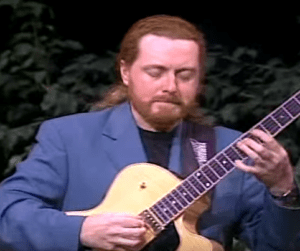
Martin Taylor
The piano-like chord melody approach of Breau would later influence more recent guitarists like Martin Taylor.
The post-bop era for guitarist is when techniques and abilities were one of the main interest in playing. Some players preferred to remain in the single-line soloing spectrum. This lead to new approaches and lines that distanced themselves from bebop. The best example of such players is Pat Martino whose technical abilities and inventiveness are ammunitions for his machine-gun solos since the late 1960's.
With the fusion of jazz with other styles, players like John Scofield and Wayne Krantz came up with a very harsh and unique sound served with impeccable techniques and abilities while never compromising the music.
Vic Juris
Ben Monder
The focus on technical abilities brought never-heard before chords voicings à la Vic Juris and Ben Monder who are two of the most respected contemporary jazz guitar players.
For me, let's keep jazz as folk music. Let's not make jazz classical music. Let's keep it as street music, as people's everyday-life music. Let's see jazz musicians continue to use the materials, the tools, the spirit of the actual time that they're living in, as what they build their lives as musicians around.
-Pat Metheny
Pat Metheny
One of the modern jazz guitarists that sticks out is Pat Metheny who learned from the greats that came before him (he collaborated with Jim Hall and the two even recorded an album) but learned to listen. The way Metheny approaches music give his compositions and albums a personal touch that has little to do with the traditional way of simply relying on scales. When Metheny improvises, he puts self-expression up front.
A Guest Post by Ny Fanilo Andrianjafy
Ny Fanilo Andrianjafy is a guitarist living in Canada. His main influences are traditional music from his birth country, Madagascar, and blues. He discovered Jazz at the age of 19 and has been in love with it ever since.

